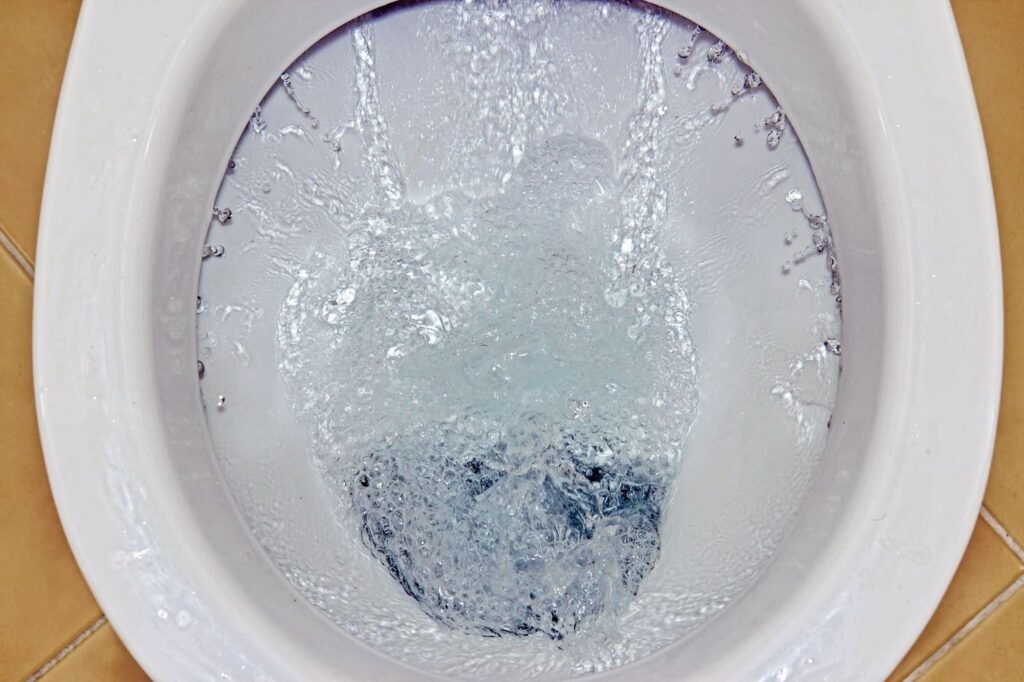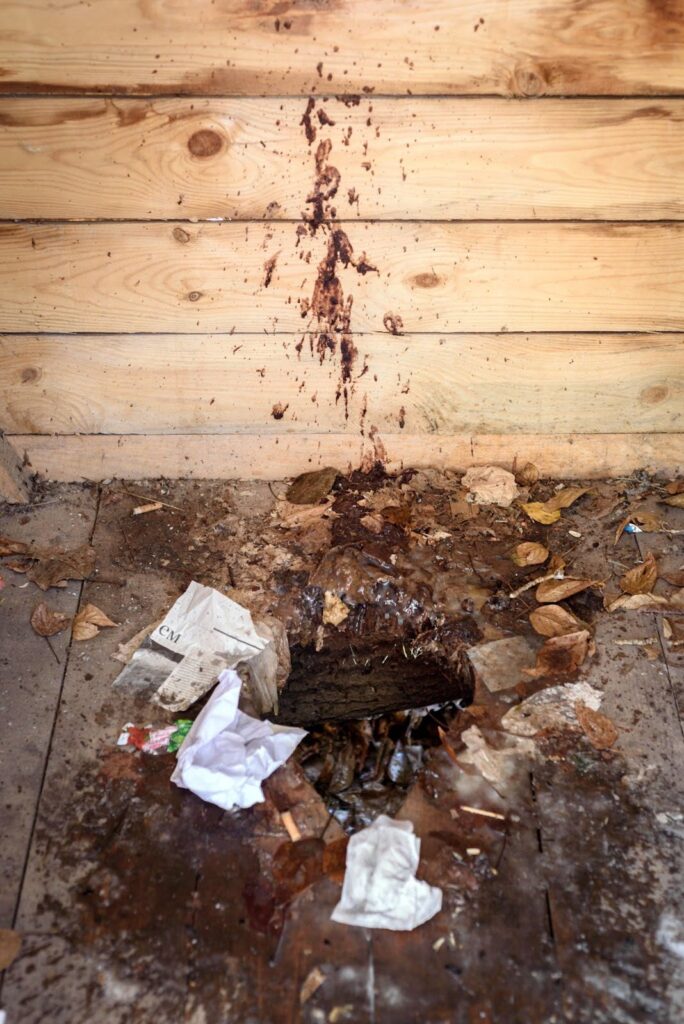On this World Toilet Day, 19th November, we must learn from the recent consequences of climate change, both floods and droughts, which disrupt health and sanitation, vital aspects of modern civilisation. Many people call our current situation a “water crisis” but sanitation is still not taken seriously.
By Jay Bhagwan and Jennifer Molwantwa. Executive Manager and CEO of the Water Research Commission. The consequences of this prolonged period of ‘constipation’ are dire. as many of us urban dwellers (who cannot practise open defecation) have come to realise in recent times. This ‘poop crisis’ has been exacerbated recently due to the failure of infrastructure and the interruption in water supply. On the back of this challenge and together with growing urbanisation, the water resource and availability continue to be a growing challenge. From Johannesburg to San Francisco, to Delhi and Bengaluru (Bangalore) as examples in both the developed and developing world, the flush is becoming a luxury we can no longer afford. Not only does it take 6 to 9 litres to flush the toilet, but nearly 60% of water consumption is used to transport human waste away from the household. In many water-stressed environments, this is a growing problem and thus a sanitation timebomb is waiting to happen.

Jay Bhagwan, Executive Manager of the Water Research Commission.

Jennifer Molwantwa, CEO of the Water Research Commission.
The Achilles heel
It is a sin that in today’s modern times we continue to flush our human wastes in times of growing water constraints. The Achilles heel is the lack of aspirational sanitation technology and innovations. The sector’s infrastructure-driven culture has blinded us from adopting and driving innovation and disruptive solutions. That is our crisis, continuing to perpetuate this ‘sin’ – where our objective at the city level has become to keep the ‘shit’ flowing, even in a crisis. We are still locked into a 200-year-old “Victorian solution”’ and the lock-in to technology is one of the key factors which continues to impact the poor and undignified sanitation in urban and rural settlements, rural schools, clinics, hospitals, and households. But this is not the only problem, since in recent times we have seen reports of the disastrous consequences of the lack of O&M on modern sanitation systems – the sewers and wastewater treatment plants. The recent Green Drop report and the status paints a very bleak picture of the state of sanitation in South Africa and fixing this problem is going to take a lot of time and money. Despite this, the political flavour continues to make promises that lead to and perpetuate this situation – some good examples to highlight are developments in Campbell, Ogies, and Emfuleni to name a few, which are all already very water-stressed, yet the option of full waterborne sewerage is chosen as the service delivery option. Many also fail to meet the Green Drop status. There are so many examples to highlight that led to this growing time bomb or the great poop explosion. The sewage is already flowing into our streets, streams, and rivers. Recognising that huge strides have been made in conventional waterborne sanitation and its societal impacts, these all come at a significant financial cost and energy requirement. Climate change and associated stresses on water availability put added pressure on water resources available for flushing and transporting human waste. Today’s water crisis in the urban world is a sanitation/sewerage crisis.

It’s a massive oversight that our toilets use 9 litres a flush when we are going through a water crisis.
Thus, a new sanitation paradigm which challenges the current paradigm and supports technology disruption is urgently needed. That is a technology which can safely treat human excreta and matches user preferences without the need for sewers, and minimal reliance on external water, energy and one which has the potential for beneficiation of waste streams. Through innovation and smart chain supply, universal access can be achieved sustainably and link itself to water security and business opportunities. This opportunity opens opportunities for leapfrogging these solutions in growing urban and rural settlements of the developing world, as well as the water-starved developed world, reducing water consumption, and carbon footprint and eliminating pollutant pathways. New Water Efficient Sanitation Solutions (WESS) are needed. These next-generation, climate-resilient, off-grid, innovative and novel technological options for sanitation consider available water and energy resources, user preferences, and variable user populations and can contribute to revenue generation through beneficiation of waste products or reduce operational and maintenance costs. Such interventions can potentially contribute to a 50% reduction in water used and supplied, huge savings on capital associated with sewers and resource-intensive traditional wastewater treatment systems, reduction, or elimination of pollution pathways, as well as a net reduction of non-revenue water (NRW) as less water will be supplied. A further benefit offered by WESS is the potential for a sustainable new sanitation circular economy, which offers opportunities for job creation and social upliftment, as well as industrialisation, localisation and a new services industry. But back to the problem where new municipal connections continue to be installed to bulk sewers and where the pipes, pump stations and wastewater treatment works (WWTWs) are either dysfunctional or do not have the capacity to deal with the additional load. Sewage sludge contaminates the environment where treatment capacity, technology or discharge options are limited. In such cases, regulation would encourage the concept of the circular economy to reuse or recover valuable nutrients from waste products. Delayed infrastructure provision due to insufficient capacity of existing sewer networks and WWTWs to accommodate new water and sewer connections. Limitations in bulk infrastructure networks hinder new system extensions and are unfeasible due to cost and WWTW access such as site suitability, e.g., mountainous, and rocky terrains are cited as a limitation in introducing waterborne systems in some communities, which makes a compelling case for decentralised systems. Further constraints in municipal capacity include effectively executing project design implementation, operation, and maintenance responsibilities, which leads to dysfunctional network and treatment systems, ineffective regulation of alternative sanitation options, e.g., package plants, which results in alternate technologies being directly prohibited or not contemplated or allowed for (not mentioned in by-laws).
Challenges and opportunities to implementation
The biggest challenge is a reluctance to change due to perceived operation and maintenance (O&M) impacts related to the choice of technology. Municipalities tend to lean towards systems that are easy to operate and maintain (or not costly to operate and maintain) and have clear responsibility delineation between the household/consumer and the municipality in terms of technology use and O&M. Municipalities are thus also disinclined to change due to a lack of understanding of what water efficient system requirements entail in terms of their responsibility versus the household/consumer’s responsibility.,
- Low awareness and exposure of water-efficient technologies amongst officials, planners, and design and process consultants contribute to a reluctance to change due to a lack of understanding of water-efficient system requirements and positive impacts,
- Lack of readily accredited or certified water efficient treatment technologies and systems in the marketplace,
- Complex and lengthy authorisation processes, as well as the lack of understanding or interpreting of guidelines regarding the requirements, roles, and responsibilities,
- Delays in processing of applications or fast-tracking new greenfield development or major brownfield redevelopment, that do not necessarily negatively impact water services infrastructure,
- Cumbersome environmental approval requirements and impacts of alternative and/or water-efficient sanitation technologies include:
- Environmental Impact Assessment studies are required for construction of WWTWs,
- Final effluent quality needs to meet national Department of Water and Sanitation norms and standards as set out in the SANS regulations,
- Environmental impact on the ground and in water sources (rivers, streams, etc.) need to be assessed,
- Any mechanical/chemical processes and moving parts that use oils/chemicals in any conversion of waste, these process oils /chemicals cannot contaminate the surrounding land and water, e.g., mini plants that convert waste to pellets/gas cannot be close to any river streams.
By entrenching WESS in sectoral regulation and policy, the negative impacts can be reduced and/or negated to facilitate unlocking bulk-related blocked projects. The practical ways to entrench WESS as part of the existing regulatory process, specifically pertaining to the proposed Water and Sanitation Services Norms and Standards (N&S), the standard water use licence (WUL) / IWUL application process, and ideally, also leveraging the concepts through the Blue & Green Drop incentive-based regulation assessments. These routes are viewed to be instrumental in fast-tracking bulk-related blocked greenfield development projects which are deadlocked in processes that disallow connections to existing municipality networks and WWTW, whilst unable to offer any alternative solutions to developers of new greenfield or major redevelopment of brownfield areas. The above challenges delay and disincentive services extension and bulk infrastructure investment and related projects. By entrenching water-efficient sanitation solutions in sectoral regulation and policy, these impacts can be reduced or negated to facilitate unlocking bulk-related projects. Such projects would include:
- A developer is enabled to invest in a greenfield development project, such as new sectional title / residential complexes and estates (including resort developments development) or a major redevelopment (brownfield areas), despite constrained access to existing bulk infrastructure, by undertaking collection, transport, and wastewater treatment services in-house, through employing WESS,
- Despite limited available water resources in an area, there is a potential for service extension through employing WESS, instead of waterborne sanitation,
- Alternative water-efficient or dry sanitation system developments (without long-term negative environmental impact) if facilitated and effectively accommodated in the national- or municipal environment, can encourage further development, e.g.:
- A developer may be able to gain municipal approval for an alternative solution due to technology exposure or certification or approved Norms and Standards for such an alternative solution,
- A developer, with municipal approval for an alternative solution, can get authorisation for the WWTWs through NWA Act Section 21, due to the availability of technology exposure or certification or approved Norms and Standards for such alternative solution,
- A developer’s proposed on-site WWTW, although not fully able to meet strict effluent quality standards (GA general- or special limits), may potentially obtain DWS approval for relaxation of specific effluent quality parameters, specifically if pollution impact is limited.
Table: Key opportunities and barriers to entrenching WESS
| Key opportunities | Key barriers |
| Efficient resource use in limited water resources and stressed water resource areas | Lack of prioritisation of WESS in regulation |
| Not adding to the overstressed capacity of sewer networks and WWTWs | Lack of readily accredited water-efficient treatment technologies |
| Unlocking service extensions and blocked bulk-related projects | Ineffectual awareness creation and lack of readily available guidelines and standards |
| Having sanitation systems that are effectively designed to manage the impact of climate change on drought and floods | Reluctance to change |
To achieve this outcome, three approaches for WESS can be considered:
- Rapid adaptation and strengthening of existing regulations by identifying quick changes to existing regulations that can be adapted, changed, or strengthened, to ensure that efficient water use, and where possible, off-grid services form part of the sanitation solutions being investigated for new greenfield developments,
- Entrenching water efficient sanitation solutions in DWS regulation by identifying more extensive changes to existing regulations and guidelines or developing new regulations that entrench WESS as part of the sanitation solutions being investigated for all developments (brownfield and greenfield),
- Entrenching water-efficient sanitation solutions in sectoral regulation by strengthening regulations, guidelines and standards or developing new regulatory documentation.
The national and global community are yet to harness the full potential of WESS, while progress is being made. The Water and Industry Master Plan-2022 report by non-profit Trade and Industry Policies (TIPS) indicated that new sanitation has the potential to generate an estimated 32 871 jobs that could be supported through delivering improved sanitation to about 3.3 million people across the 10 most water-stressed municipal districts at a total cost of around R16 billion. They also suggested that retrofitting smarter and more sustainable technologies in existing private sector infrastructure (households and businesses) has the potential to create 2.4 million short-term contracts, translating to 25,000 new direct long-term jobs. Thus, the climate-resilient WESS opportunity offers more than just water and sanitation security, but also socio-economic benefits. Let us not waste this opportunity and diffuse the timebomb.

The bucket system is an undignified system that must be remedied.










